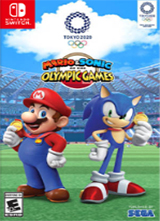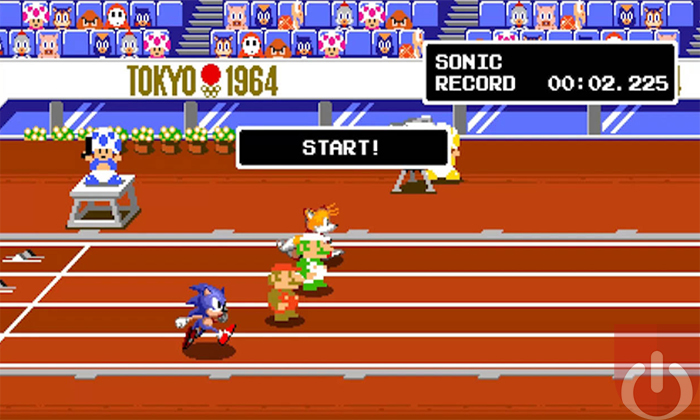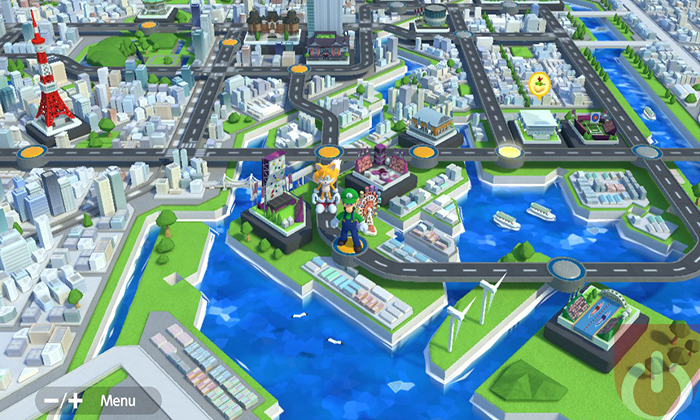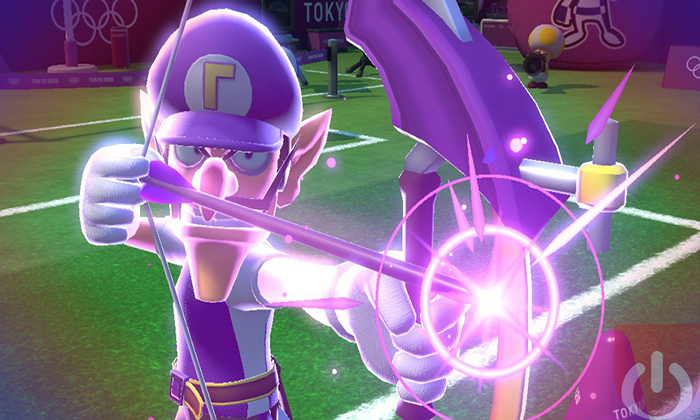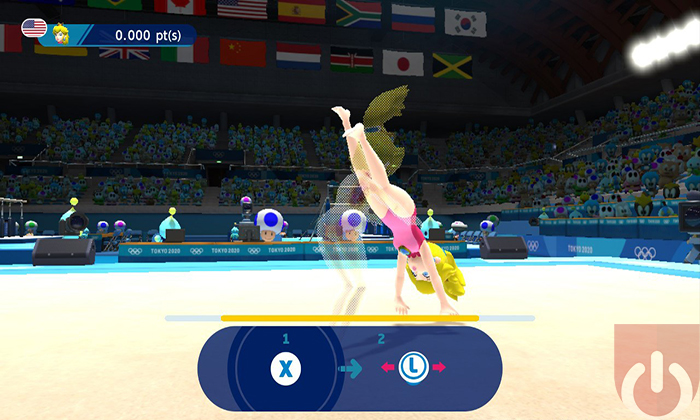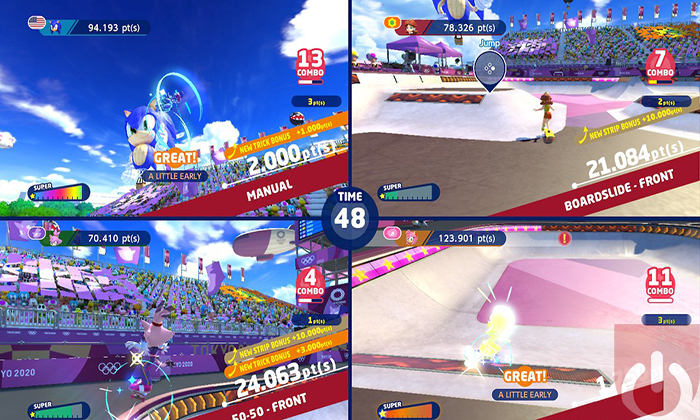Mario & Sonic at the Olympic Games Tokyo 2020
The Mario & Sonic series should be well received by party game fans. A variety of events, iconic mascots, and a mostly accessible control scheme – they essentially run parallel to the more popular games in the genre. Unfortunately, a few notable design choices and overall adherence to the Olympics prevents the series from being great.
Mario & Sonic at the Olympic Games Tokyo 2020 suffers in a similar fashion. Take the new campaign mode. It offers players a means of unlocking more activities and characters via a silly, yet interesting premise. Dr. Eggman and Bowser accidentally traps themselves, along with Mario and Sonic in a retro console called Tokyo 1964. In order to escape, they compete in the 1964 Olympics (the last time it was held in Tokyo) as their 8-bit and 16-bit selves. Meanwhile, the other heroes/villains fight over the console while competing in their own Olympic games. Again, it’s silly. It tries to entertain though. Some of the 2D style activities evoke a sense of nostalgia while the regular sporting events provide brief moments of fun.
The problem is that most of the campaign is spent reading dialogue and walking around an overworld map of Tokyo. First there’s some sort of drama. Bowser Jr. has stolen the retro console. Luigi and Tales will chase after him. Meaning, they’ll walk to the glowing mark on the map and load into an area (typically one of the venues housing an event). They’ll then bump into another character. One offering their talents in hopes of winning back the console. Once the event is over and Jr. unsurprisingly welshes on their deal, the whole thing starts over again.
The discontinuous play is worsened by the fact that players don’t always get the opportunity to compete. There are times when I’d go to a venue just to talk to someone to find out that I just “missed” the person I was looking for, prompting me to leave and head to the next area. What that translates to is a load screen, a brief conversation, a load screen, me walking around a map, and then another load screen.
Suffice it to say that the campaign is tedious. Players will only ever complete it to unlock new mini-games and characters. Which isn’t really a compelling reason given the continuously odd design choices. For instance, many of the unlockable characters are tied to certain events. Wendy Bowser and Eggman Nega can only be used for Swimming and Karate, respectively. I can’t fathom why this is the case. Though each character has their own specialty none of their attributes are strong enough to sway a match. Meaning, even though Sonic’s strength is his speed, you won’t automatically win if you pick him for the 100m dash nor does platforming legend Mario dominate in the Long Jump. They’ll give good players a slight boost, but that’s only if those players are already good at a given event.
Speaking of the sporting events, there are several to choose from. Classic events like 110m Hurdles, Swimming, and Boxing return alongside newer ones like Karate, Surfing, and Skateboarding. They’re all entertaining in their own right. Partly because of what they are in relation to sports; there’s something inherently intriguing about “competing” in the Olympics.
It’s also partly because they offer multiple options of play. While the 2D games offer one control scheme, most of the normal events offer three. Players can decide to use the face buttons (avoiding motion controls), try using a solo joy-con or double up with two. It’s all based on your personal preference – each one controls differently enough to warrant trying them all out.
This does a few things. Namely, making the older events feel new again. One of the main criticisms aimed at this series is its redundancy – each game typically features the same sporting events, the few arcadey twists notwithstanding. While this is to be expected, considering how they’re supposed to be about the Olympics games (which don’t change that often), it was still a reasonable concern given the number of events that were absent during any given release. Thankfully, the different control schemes help in alleviating the “been there, done that” vibes.
Regardless of the configuration, Mario & Sonic’s controls are accessible in nature. It doesn’t take much to get in and start competing. That said, the game does allow players to excel among their competitors by learning the finer elements. Rapidly tapping “A” will cause your character to run during a foot race. Anyone can do that. Pressing “R” to activate a super move to speed by someone about to cross the finish line isn’t that hard either. But knowing when to press it again to lean slightly forward, edging out an opponent at the end takes some skill. Therefore, players at potentially any level of experience can enjoy participating.
All of the events have extra mechanics that need to be practiced. Not all of them were created equal challenge-wise though. For example, table tennis moves players left and right (you only control when/how you hit the ball), while gymnastics is completely up to the player; various button combinations will pop up on the screen, giving players a brief window to hit them all before landing at the end of a routine. The differential skill requirements will definitely encourage newer players to focus on some of the easier to play events or even the less traditional ones.
SEGA has brought back the Dream Events. These nontraditional games aren’t based on real sports, which adds a bit of flavor – they aren’t as strict as the Olympic sports. Like Dream Karate. Instead of a one on one fight for points, up to four players can duke it out for control of a gridded board. The idea is to knock opponents down, changing the tiles under them to your color. Whoever has the most “claimed” tiles at the end of the match wins. There are also the mini-games that are unlocked by playing the campaign. They’re short side activities that are separate from the 2D events, Olympic sporting events, and the Dream events. Basically, there are a lot of things to do in Mario & Sonic.
Though some might still feel redundant (considering the previous games in this franchise), most of them are really entertaining. However, the overall enjoyment is stifled by one of the worst design decisions of this edition of Mario & Sonic Olympics; the removal of any sort of tournament options. Whether playing online or locally, players aren’t able to continually compete. At the end of an event, they’ll have the option to replay it or pick another event. If the choice is made to move on to another event, players are kicked back to the events menu (to pick the sport). They’ll then need to pick their control options and characters all over again. This is all of course, broken up by load screens – the discontinuity makes playing with friends and family feel like a chore at times. Hopefully a tournament mode will be added via a patch or update, as its absence truly hurts the overall gameplay.
Mario & Sonic at the Olympic Games Tokyo 2020 is filled with several different event types spanning from the traditional Olympic games to quirky Dream events and nostalgic 2D games. The controls are accessible for players of all levels but are uniquely enhanced with subtle attributes, allowing more seasoned players to test their skills and newcomers to develop theirs. Unfortunately, the tedious story mode and the missing tournament options leave much to be desired for both single and multiplayer gaming, respectively.
Gameplay:
7
Mario & Sonic at the Olympic Games Tokyo 2020 is entertaining. More so than the previous games in the series. That said, odd design choices keep it from being as good as it could have been.
Graphics:
9
The assorted characters from Mario and Sonic’s collective franchises look great.
Sound:
7
The music and effects sound good.
Replay Value:
7
Playing with family and friends can be fun. The stop-and-go nature of play does lead to short lived sessions though.
Final Score:
7.8
